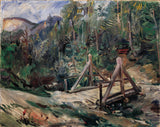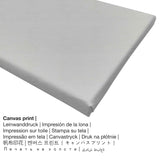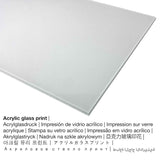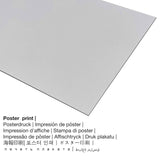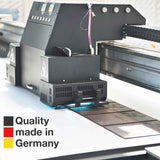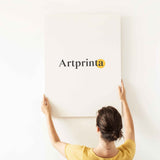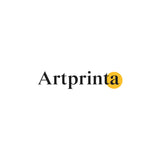Lovis Kọrịnt, 1913 - Okirikiri ala Tyrole nwere akwa - mbipụta nka mara mma
Ụtụ gụnyere. Mbupu gbakọrọ na ndenye ọpụpụ.
Ozi ndabere gbasara akụkọ
The nkà nke oge a ihe esere ihe nka oge a artist Lovis Kọrịnt. The 100 years old work of art was painted with the size: 95,5 x 120,5 cm - frame size: 118 x 143 x 11 cm and was painted with the medium mmanụ na kwaaji. "Signed and dated bottom center: LOVIS CORINTH / Tyrol 1913" is the painting's inscription. It is included in the nke Belvedere nchịkọta. Nke a nkà nke oge a artpiece, which is in the public domain is being supplied with courtesy of © Belvedere, Vienna, inventory number: 2885. Creditline of the artwork: purchase from Charlotte Berend-Corinth, Berlin in 1929. The alignment is in landscape format na akụkụ ruru nke 1.2: 1, meaning that the length is 20% longer than the width. The painter, sculptor, university teacher, graphic artist, drawer, lithographer Lovis Corinth was a European artist from Germany, whose art style can mainly be classified as Modern Art. The Modern artist lived for a total of 67 afọ - a mụrụ n'afọ 1858 na Gvardeysk, Kaliningradskaya Oblast�, Russia ma nwụọ n’afọ 1925 na Zandvoort, North Holland, Netherlands.
Họrọ ngwa ngwaahịa gị
N'ime ndetu ndetu na-esote onyinye ngwaahịa ị nwere ike họrọ nha na akụrụngwa ọkacha mmasị gị. Họrọ n'ime nhọrọ ngwaahịa ndị a ugbu a ka ị kwekọọ na mmasị gị na nha na akụrụngwa:
- Mbipụta ọla (aluminium dibbond): This is a metal print manufactured on aluminium dibond material with a true depth - for a modern look and non-reflective surface structure. A direct Direct Print on Aluminum Dibond is the ideal introduction to the sophisticated world of art replicas made with aluminum. For our Print On Aluminum Dibond, we print the artwork onto the aluminium composite white-primed surface. The direct print on Aluminum Dibond is the most popular entry-level product and is a sophisticated way to display art reproductions, because it puts 100% of the viewer’s attention on the image.
- Mbipụta iko acrylic (nke nwere ezigbo mkpuchi iko): A glossy acrylic glass print, which is sometimes described as a plexiglass print, changes your chosen artwork into décor. Besides, the acrylic fine art print forms a great alternative option to canvas and dibond prints. The work of art is printed thanks to state-of-the-art UV direct printing technology. Our real glass coating protects your chosen art print against light and heat for many years.
- Mbipụta akwụkwọ mmado (ihe kwaaji): The poster is a UV printed canvas with a fine surface structure. Please note, that depending on the absolute size of the canvas poster print we add a white margin of something between 2-6 cm round about the work of art, which facilitates the framing with a custom frame.
- Mbipụta kwaaji: The canvas print is a printed cotton canvas mounted on a wood stretcher. The great advantage of canvas prints is that they are relatively low in weight, which implies that it is easy and straightforward to hang the Canvas print without the help of additional wall-mounts. Canvas prints are suited for any kind of wall.
Ederede iwu: We try the best we can in order to depict our art products in as much detail as possible and to showcase them visually. Still, the tone of the print materials and the imprint may vary slightly from the image on the device's monitor. Depending on your screen settings and the nature of the surface, not all color pigments can be printed as exactly as the digital version. In view of the fact that all the fine art prints are printed and processed manually, there might also be minor discrepancies in the motif's exact position and the size.
Ngwaahịa a
| Nkewa ngwaahịa: | nka nka |
| Usoro mmeghari: | dijitalụ mmeputakwa |
| Usoro mmepụta: | Mbipụta UV ozugbo (mbipụta dijitalụ) |
| Mmalite nke ngwaahịa a: | emere na Germany |
| Stockdị ngwaahịa: | na mmepụta ihe |
| Eji ngwaahịa emebere: | mgbidi gallery, ime ụlọ |
| Nhazi nka nka: | usoro odida obodo |
| Oke akụkụ onyonyo: | 1.2: 1 |
| Oke akụkụ pụtara: | ogologo bụ 20% ogologo karịa obosara |
| Materials: | acrylic glass print (nwere ezigbo mkpuchi iko), mbipụta akwụkwọ mmado (akwụkwọ kwaaji), mbipụta kanvas, mbipụta ọla (aluminium dibond) |
| Mbipụta kanvas (akwa akwa n'elu etiti ihe ndọtị) ụdị nha dị iche iche: | 60x50cm - 24x20", 120x100cm - 47x39", 180x150cm - 71x59" |
| Mbipụta iko acrylic (nwere ezigbo mkpuchi iko) dị iche iche: | 60x50cm - 24x20", 120x100cm - 47x39" |
| Mpempe akwụkwọ mmado (akwụkwọ kwaaji) nha: | 60x50cm - 24x20", 120x100cm - 47x39" |
| Mpempe akwụkwọ Dibony (ihe alumnium) nha dị iche iche: | 60x50cm - 24x20", 120x100cm - 47x39" |
| ụba: | na-enweghị etiti |
Nkọwa ahaziri nke mpempe nka
| Aha ọrụ nka: | "Tyrolean landscape with bridge" |
| Nhazi nka: | sere |
| Otu izugbe: | nkà nke oge a |
| Nhazi oge: | 20th narị afọ |
| Year: | 1913 |
| Ogologo afọ nka nka: | karịa afọ 100 |
| Usoro nka izizi: | mmanụ na kwaaji |
| Ogo nke ọrụ nka izizi: | 95,5 x 120,5 cm - nha etiti: 118 x 143 x 11 cm |
| Akara mbinye aka: | signed and dated bottom center: LOVIS CORINTH / Tyrol 1913 |
| Ụlọ ihe ngosi nka: | Belvedere |
| Ebe ngosi nka: | Vienna, Austria |
| Ebe nrụọrụ weebụ ihe ngosi nka: | Belvedere |
| License: | ngalaba ọha |
| Site n'aka: | © Belvedere, Vienna, nọmba ngwa ahịa: 2885 |
| kreditline ọrụ nka: | purchase from Charlotte Berend-Corinth, Berlin in 1929 |
Nyocha ngwa ngwa nke onye na-ese ihe
| aha: | Lovis Kọrịnt |
| Aha ndị ọzọ: | Corinth, Corinth Lovis, Corinth Lovis, lowis corinth, corinth l., Corinth Franz Heinrich Louis, Corinth Louis, l. corinth, קורינת לוביס, Lovis Corinth, Louis Corinth, professor lovis corinth, Korint Lovis |
| okike onye nka: | nwoke |
| Obodo onye nka: | German |
| Ọrụ: | lithographer, drawer, sculptor, university teacher, painter, graphic artist |
| Country: | Germany |
| Nkewa onye nka: | omenkà nke oge a |
| Ụdị nka: | Art |
| Nwụrụ na afọ nke: | 67 afọ |
| A mụrụ: | 1858 |
| Ebe omuma: | Gvardeysk, Kaliningradskaya Oblast, Russia |
| Nwụrụ n'afọ: | 1925 |
| Obodo ọnwụ: | Zandvoort, North Holland, Netherlands |
© Nwebiisinka nke | Artprinta (www.artprinta.com)
Ozi nka ndị ọzọ sitere na museum (© - nke Belvedere - Belvedere)
Family Corinth spent the summer of 1913 in St. Ulrich in Val Gardena in today's South Tyrol, where also emerged two landscapes besides some portraits. The place was the family already known from the summer residence in 1911 ago, at the Corinth but apparently only painted a picture that even less specific reference to the source. In contrast, however, this is at the Tyrolean landscape with bridge - this is clearly the falling of Ortisei characteristic steep cliffs to see behind the Raschötzer ridge. The strikingly reduced for Corinth palette whose colors are repeated in this image without finely graded transitions suggests that Corinth has his picture painted directly outdoors in front of the bridge. Thus, not only the choice of colors, but also the extraordinary rapidity explains worked obviously in Corinth. [Dietrun Otten, 2009]

